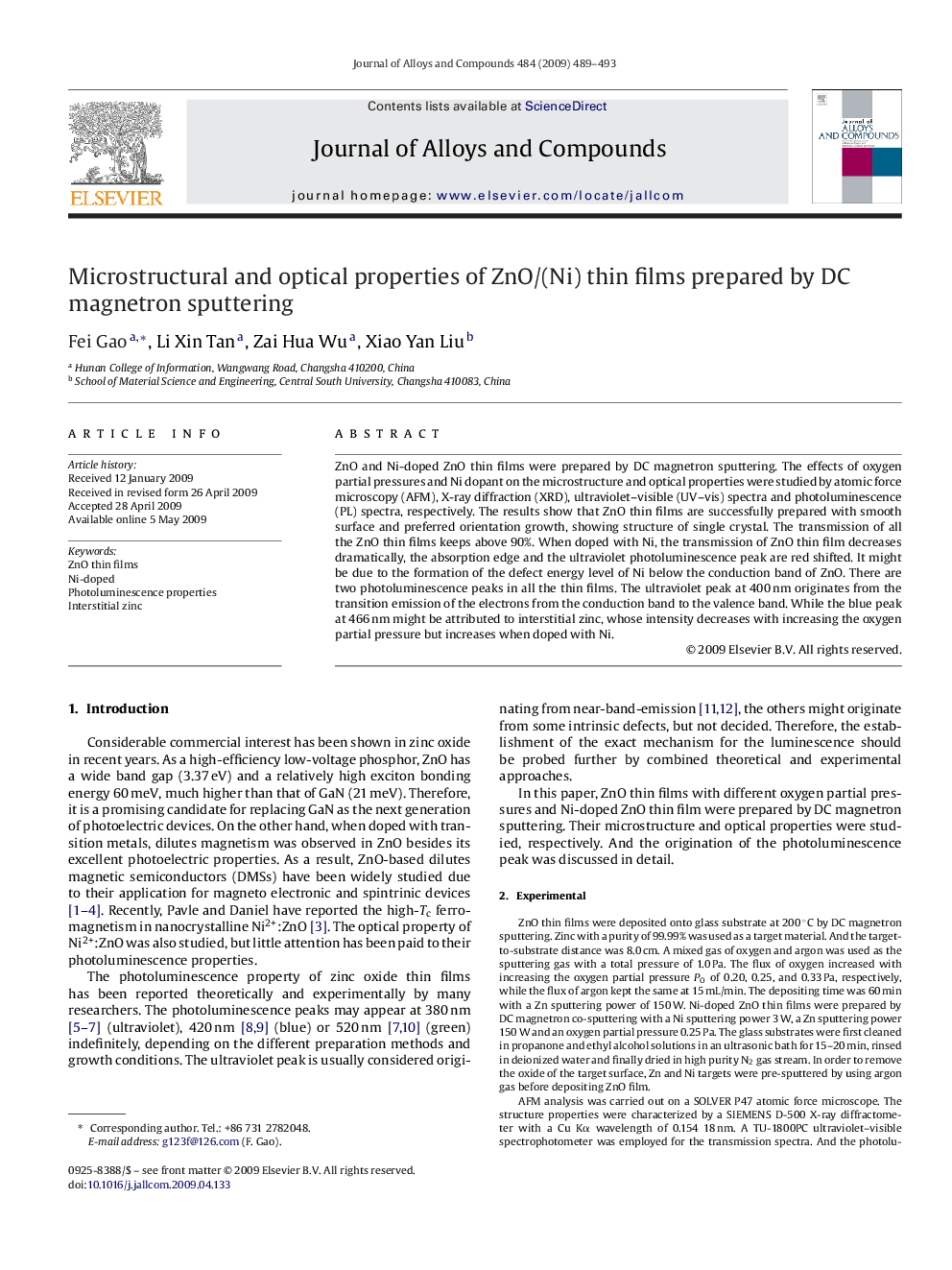| Article ID | Journal | Published Year | Pages | File Type |
|---|---|---|---|---|
| 1621346 | Journal of Alloys and Compounds | 2009 | 5 Pages |
ZnO and Ni-doped ZnO thin films were prepared by DC magnetron sputtering. The effects of oxygen partial pressures and Ni dopant on the microstructure and optical properties were studied by atomic force microscopy (AFM), X-ray diffraction (XRD), ultraviolet–visible (UV–vis) spectra and photoluminescence (PL) spectra, respectively. The results show that ZnO thin films are successfully prepared with smooth surface and preferred orientation growth, showing structure of single crystal. The transmission of all the ZnO thin films keeps above 90%. When doped with Ni, the transmission of ZnO thin film decreases dramatically, the absorption edge and the ultraviolet photoluminescence peak are red shifted. It might be due to the formation of the defect energy level of Ni below the conduction band of ZnO. There are two photoluminescence peaks in all the thin films. The ultraviolet peak at 400 nm originates from the transition emission of the electrons from the conduction band to the valence band. While the blue peak at 466 nm might be attributed to interstitial zinc, whose intensity decreases with increasing the oxygen partial pressure but increases when doped with Ni.
